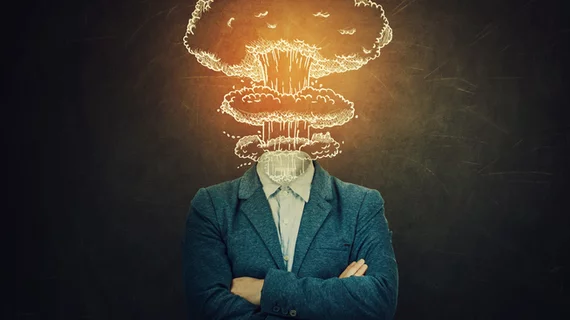Radiologists experiencing high levels of anxiety, psychological stress during pandemic, survey finds
U.S. radiologists are experiencing high levels of anxiety and psychological stress during the pandemic according to a new survey of the field released Friday.
Polling nearly 700 such physicians, about 61% respondents labeled their anxiety levels at 7 or higher on a 10-point scale. And those numbers appeared to correlate with whether a doctor’s state has struggled to contain the outbreak, University of Southern California experts reported in Clinical Imaging.
“In keeping with similar findings in related healthcare fields, our data support that radiologists are also experiencing high levels of anxiety and adverse psychological effects as a result of the COVID-19 pandemic,” Natalie Demirjian, with USC’s Keck School of Medicine in Los Angeles, and colleagues wrote Aug. 28.
All told, the average anxiety score in the study landed at 6.72. Common ways in which radiologists are coping with stress include spending more time with family (63%) and exercising (57%), while several respondents said they were “too busy with work.” Others, meanwhile, said they’ve neglected self-care partly because the “number of Zoom meetings has exploded.” “Personal health” was also a strong predictor of higher anxiety.
Demirjian and colleagues administered their 43-question survey anonymously in early April, adapting the queries from the AO Spine Foundation’s own poll of surgeons. They pinpointed participants using multiple sources—including the American Society of Emergency Radiologists’ and the Association of University Radiologists’ membership lists—with the final list covering 44 states.
A few more interesting findings follow below. You can read the analysis in its entirety in Clinical Imaging. Demirjian acknowledged that attitudes in the field have likely changed, given the fluid nature of the crisis. “Though this study offers a snapshot in time, the very nature of the pandemic is incredibly dynamic, and challenges faced by U.S. radiologists will undoubtedly evolve as the numbers of COVID-19 cases continue to rise,” she cautioned.
- Nearly 43% said either “no” or “I don’t know” when asked if they had easy access to COVID-19 testing.
- About 76% said their medical center was adequately prepared for a surge in cases, but just 40% said their institution had a mass casualty imaging plan.
- Chest x-ray was the most common primary diagnostic approach for patients under investigation for the virus at 46%, followed by lab testing at 43%.
- About 84% felt their hospital leadership’s pandemic response was “acceptable/appropriate.”
- A majority anticipated or had already sustained a decrease in income (56%), while 11% said they experienced a partial or complete layoff during the crisis.
- The most commonly cited stressors included family health (71%), personal health (47%) and financial concerns (33%).
- Beyond family and exercise, the next most common coping strategies were watching TV (44%), reading (34%) and talking with friends (33%).

